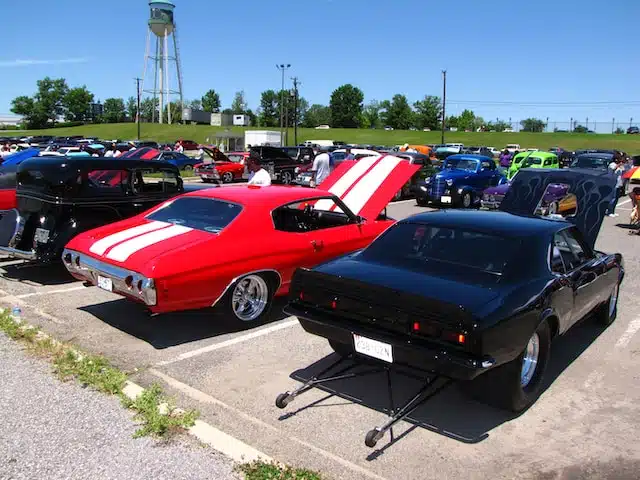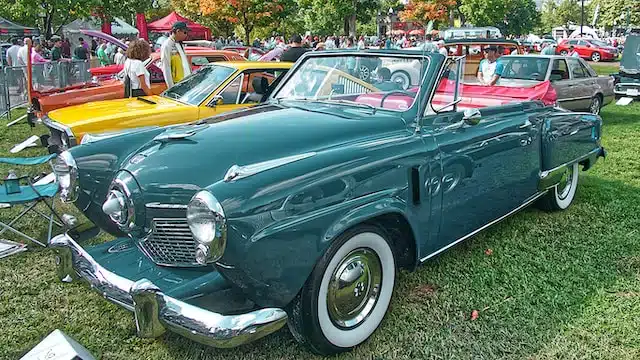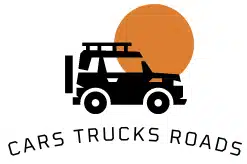
When it comes to car show planning and organization, the task can be quite daunting for the unprepared. A successful car show is a well-orchestrated event that requires detailed preparation, effective promotion, and efficient execution. This article aims to provide a concise guide on how to plan and organize a car show, with practical tips on choosing the right location, managing logistics, creating an effective promotional strategy, attracting high-quality exhibitors, and ensuring a safe and enjoyable event for all attendees. By the end of this guide, you should have a clear roadmap for staging a successful car show that leaves a lasting impression.
Planning
In the initial stages of car show planning and organization, it’s essential to determine the purpose of your event, the target audience, the type of cars to showcase, and the estimated budget. You need to also decide on the date and venue of the show, considering the local climate, the size of the expected crowd, and the capacity of the chosen location.
Pick a date that works. Sundays often work best for car shows because most people are off work. Choose 2-3 possible dates as backups in case the first one doesn’t work out. Aim for the spring or fall when the weather is mild, avoiding the harshness of winter and the heat of mid-summer. Check online to ensure there aren’t other local shows or events happening simultaneously to avoid competition for attendance.
Starting planning 12-18 months in advance is ideal. This timeframe allows for handling unexpected setbacks and provides ample time for marketing efforts. Key elements to determine at this stage include:
Purpose of the Show
Whether it’s fundraising, community engagement, or pure passion for cars, defining the purpose can guide subsequent planning decisions.
Target Audience
Understand who you’re targeting – classic car enthusiasts, sports car fans, families, etc.
Type of Cars
The kind of cars you intend to showcase will influence the exhibitors you need to engage and the attendees you can attract.
Budget
Budget planning is vital. Understand your potential income sources and budget for venue rental, promotion, insurance, and other logistics.
Licensing and Permit
Once you have the basics sorted, it’s time to deal with the legal aspects. You must secure necessary permits, licenses, and insurance coverage to conduct your event legally and safely. This process may vary based on local laws and regulations.
The legalities will vary based on your local area but generally, you may need:
Event Permit
Check with local authorities about securing a permit to hold a large-scale public event.
Food and Beverage Permit
If you plan to sell food and beverages, additional permits may be required.
Insurance
Event insurance covers accidents or damage during the event. It’s essential to mitigate risk and often a requirement to secure a venue.
Attracting Exhibitors

For a car show, quality exhibitors are key. Your exhibitor list should include a mix of renowned car manufacturers, local dealers, classic car owners, and even hobbyists. Creating a compelling package for exhibitors, including sponsorships and advertising opportunities, can attract high-quality displays.
A rich, diverse selection of cars can make your show attractive. Consider:
Invite Diverse Exhibitors
Including manufacturers, dealers, collectors, and hobbyists.
Sponsorships and Advertising
Offer promotional opportunities to potential exhibitors, this can be a powerful incentive for participation.
Exhibitor Amenities
Ensure you provide ample space, security, and other amenities for your exhibitors.
Marketing and Promotion
In the digital age, it’s crucial to employ a multi-channel marketing approach. Use social media, local advertising, partnerships with local businesses, and networking within car clubs and communities. Remember, your promotional content should be engaging and should highlight the unique features of your show.
Your promotional strategy should cover:
Multi-channel Approach
Utilize online platforms (website, social media), local newspapers, radio stations, and flyers in community spaces.
Local Partnerships
Collaborate with local businesses or car clubs to widen your reach.
Engaging Content
Use compelling visuals and narratives about the cars, the exhibitors, or the event’s purpose to draw in your audience.
Logistics and Event Management
Logistics include arranging for parking, security, food and beverages, restrooms, first aid, and more. A well-planned event ensures smooth entry and exit points, clearly marked exhibit areas, and easy access to facilities and services. Details to consider include:
Accessibility
The venue should be easily accessible, with clear signs for entry, exit, parking, and different exhibit areas.
Facilities
Arrange for adequate restrooms, food and beverage stands, first-aid stations, etc.
Security
Plan for crowd control and security to protect the exhibits and manage the crowd.
Post-Event Activities
Lastly, don’t forget post-event activities. These include cleaning up the venue, paying your vendors, thanking your sponsors and exhibitors, gathering feedback from attendees, and creating a post-event report. After the event, remember to:
Cleanup
Ensure the venue is cleaned up and restored to its original state.
Payments
Settle all due payments to vendors, security, and other service providers.
Thank You
Express gratitude to your sponsors, exhibitors, and volunteers.
Feedback and Report
Collect feedback from attendees and create a post-event report to help improve future events.
Car Show Planning and Organization: Costs, Revenues, and Potential Profitability
Car shows can be a thrilling way to indulge your passion for automobiles and bring together like-minded enthusiasts. But what’s the financial reality? Let’s look at the different scenarios and potential costs, revenue streams, and the potential profitability of organizing a car show.
Understanding the Costs
Costs can vary greatly based on the scale and location of your event. Here are some key expenses to consider:
Venue Rental
Depending on the size and prestige of the location, venue rental can range from a few hundred to several thousand dollars.
Insurance
Event insurance costs can vary but expect to pay at least $200-500 for a basic policy. If alcohol is served, costs may rise.
Marketing
Advertising costs can range from $500 for a smaller local event to $5,000 or more for larger ones.
Permits and Licenses
Costs for permits and licenses differ by location. For example, a city park permit might cost $200, while a food vendor permit might be $100.
Logistics
This includes security, parking, portable restrooms, food and beverages, etc. Depending on the size and duration of your event, this could range from $1,000 to over $10,000.
Revenue Streams
Successful car shows can generate revenue through various channels:
Ticket Sales
Tickets could be your primary source of income. The price can vary based on the event’s size and type. For instance, tickets for local shows may cost $10-15, while larger, specialized shows can charge upwards of $50 per ticket.
Sponsorships
Local businesses, auto parts retailers, or car manufacturers might sponsor your event. Sponsorships can range from a few hundred dollars to several thousand, depending on the sponsor’s visibility and the event’s size.
Vendor Booths
Food vendors, merchandise sellers, or car-related businesses may pay for booth space at your event. Booth fees can range from $50 to $500 or more, depending on the event’s scale.
Exhibitor Fees
Car owners or manufacturers might pay to showcase their cars. Fees can vary based on the event, car type, and prestige level.
Profitability Scenarios
Profitability depends on successfully balancing costs with revenues:
Scenario 1 – Small, Local Show
For a small local show with lower costs, modest sponsorships, and ticket sales, profitability might be achievable with careful budgeting and robust local support.
Scenario 2 – Mid-Sized Regional Show
A mid-sized regional show might attract larger sponsorships and higher ticket sales, but also come with increased costs. Profitability would depend on effective marketing and maintaining good relationships with sponsors.
Scenario 3 – Large, Specialized Show
Large, specialized shows can draw significant sponsorships and high ticket prices but also have high costs. Success would heavily rely on national or international marketing and attracting high-quality exhibitors.
In conclusion, organizing a car show can indeed be profitable, but it requires careful planning, strategic marketing, and diligent cost management. A clear understanding of your target audience, local market, and potential revenue streams is vital to turn your passion for cars into a profitable event.
Car Show Planning and Organization: Your Essential Checklist
Organizing a car show can be an exciting yet complex process. This checklist ensures you stay on top of every crucial aspect for a successful event:
1. Pre-Event Planning
- Define the purpose and objectives of the show.
- Determine your target audience.
- Decide on the type of cars to be displayed.
- Develop an initial budget estimate.
- Set a suitable date and time for the event.
- Select an accessible, suitable venue.
- Start planning 12-18 months ahead.
2. Legal Requirements
- Check with local authorities for necessary permits and licenses.
- Secure event insurance coverage.
- Ensure adherence to safety regulations and guidelines.
3. Exhibitors and Cars
- Create a list of potential exhibitors – manufacturers, dealers, collectors, and hobbyists.
- Reach out to potential exhibitors with compelling sponsorship and advertising packages.
- Confirm participation of exhibitors.
- Arrange for space, security, and amenities for exhibitors.
4. Marketing and Promotion
- Develop a multi-channel marketing strategy.
- Create engaging promotional content – graphics, videos, posts.
- Set up social media channels for the event.
- Promote the event via local newspapers, radio stations, community spaces.
- Partner with local businesses or car clubs for wider reach.
5. Event Logistics
- Plan layout for venue – entry, exit, parking, exhibit areas.
- Arrange for necessary facilities – restrooms, food and beverage, first-aid stations.
- Hire security for crowd management and exhibit protection.
- Set up a system for ticketing and entry.
- Prepare a contingency plan for weather or other unexpected events.
6. During the Event
- Ensure smooth operation of entry and exit points.
- Supervise the proper arrangement of exhibits.
- Monitor the functioning of facilities and services.
- Engage with attendees, exhibitors, sponsors, and media.
7. Post-Event Activities
- Supervise clean-up of the venue.
- Settle all pending payments to vendors and service providers.
- Thank sponsors, exhibitors, volunteers for their contribution.
- Collect feedback from attendees and exhibitors.
- Prepare a post-event report highlighting key accomplishments and areas for improvement.
Car Show Planning and Organization: FAQs

Q: How much in advance should I start planning for a car show?
Typically, you should start planning a car show 12-18 months in advance. This timeline allows you to secure the necessary permits, engage exhibitors, market the event, and coordinate logistics.
Q: What type of insurance do I need for a car show?
Event insurance is a must for a car show. This insurance provides liability coverage for accidents or damage that occur during the event. If alcohol is being served, additional coverage may be required.
Q: How do I attract quality exhibitors to my car show?
Creating compelling packages for exhibitors that include sponsorship and advertising opportunities can attract high-quality participants. Reaching out to car manufacturers, dealers, collectors, and hobbyists with these opportunities can enrich the range of exhibits at your show.
Q: What are some effective marketing strategies for a car show?
Utilize a multi-channel approach that includes a website, social media platforms, local newspapers, radio stations, and flyers in community spaces. Engaging content that highlights the unique features of your show is crucial. Partnerships with local businesses and car clubs can also help extend your reach.
Q: What facilities should I consider for the car show?
Plan for ample parking, security measures, food and beverage stands, portable restrooms, first-aid stations, and waste disposal. Also, ensure there are clear signs for entry and exit points and different exhibit areas.
Q: What post-event activities should I consider?
Post-event activities include cleaning up the venue, settling payments with vendors and service providers, thanking sponsors and exhibitors, gathering feedback from attendees, and preparing a post-event report.
Q: Can organizing a car show be profitable?
Yes, car shows can be profitable if carefully planned and effectively marketed. Revenue can be generated from ticket sales, sponsorships, vendor booth fees, and exhibitor fees. However, it’s crucial to balance these potential earnings with the costs of organizing the event, such as venue rental, marketing, insurance, and logistics.


